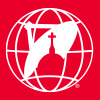An Artistic Testament to Biblical Storytelling
“Evangelization is more than just simple doctrinal and moral transmission. It is, first and foremost, witness.”
These are powerful words from Pope Francis.
From St. Peter, the first Pope of the Church, to Pope Francis, the most important mission of the Church has always been to proclaim the Gospel to men and women.
Today, the Church makes use of modern means of communication to do so. But even in the days when the internet had not yet been invented, the preachers of the Gospel were extremely creative.
Fr. Anton Höslinger, Provost of Stift Klosterneuburg, explains, “The Verdun Altar is a very beautiful example of how the Bible was explained and presented in the Middle Ages. Since not everyone could read and write at that time, the message was conveyed through the art.”
Not far away from Vienna, Austria, is Klosterneuburg Abbey.
“The Augustinian Canons who have been living and working here since the twelfth century, for almost 900 years,” Father informs us, “are primarily involved in pastoral work, especially in the many parishes around Klosterneuburg and Vienna, but also in Lower Austria, and then extending as far as the USA and Norway.”
Theological Symbolism in Art
The Verdun Altar in Klosterneuburg has been recounting the Gospel of Jesus Christ for over 800 years. Wolfgang Christian Huber, the Custos of the monastery, is very familiar with the technical details.
He tells us, “The enamel altar of Nicholas of Verdun is not only the largest preserved goldsmith's work of the Middle Ages, but also of both artistic and technical quality. This is an outstanding work that can hardly be matched. There are a total of 51 scenes, six of which were added later, but 45 that actually date from the 12th century.”
Father Elias Carr has been living in Klosterneuburg for many decades now and is still fascinated by the Verdun Altar.
Father Elias notes: “What we have here is an incredible monument to Catholic biblical interpretation, which is based on the way the Bible explains itself. It's based on the idea of anti-type and type, that the type is the original. In the Bible we have the Old Testament, which tells stories which we find their fulfillment in Jesus Christ and in the Church and in other aspects of God's plan.”
Explaining the iconography of the altar, Father adds, “So let's have a little look at some of these images before to see how it all works. Here, of course, is the Annunciation. That of course, we celebrate on March 25th. We see the Annunciation of Our Lady, the Archangel Gabriel, there. And then we see two other annunciations, the Annunciation of Isaac, that, of course, is the son of Sarah and Abraham, and the Annunciation of Samson, one of the judges in the Book of Judges. His image is going to come up multiple times in here, because they needed to find somebody who could be an antitype to Jesus Christ.”
Some other symbols: “And then here, of course, is the finding of the grapes from the two scouts in the Book of Numbers. And the grapes, of course, is a Eucharistic symbol for the wine, which Jesus turns into his Precious Blood in the Eucharist.”
Other theological themes emerge, Father Elias explains, “The very end of the Verdun Altar is eschatological, which means it deals with the last things. It's no longer now the three levels, but now six tablets that are in the two columns that refer to the last things. The resurrection of the dead, the angels announcing the return of Jesus, and then the judgment of those who have chosen not to be with God. That is hell. And of course, people tend to really like this one because it has a bishop in it, or a couple of bishops and a king and a monk and all this. It's showing that the medieval Christianity valued human freedom. Our choices are meaningful. And of course, the heavenly Jerusalem, which is the symbol of what God wants. God wants us to know him face to face. He wants us to be in a community. He wants us to be fully realized in ourselves, to be the person he already knows us to be.”
The Message of Christ Still Relevant Today
For Father Elias, the message of this 800-year-old altar is still relevant today. We asked the priest from New York one important question: What is his favorite German word?
“Oh, there's so many good German words, but I'll choose one. I mentioned recently when I was with EWTN in Europe and that is ‘Untergangstimmung.’ That, of course, is the term that means everything's going to hell. And it's a terrible temptation that people think it's all just getting worse. And that's the one thing that we Christians can't accept. God has chosen us to be the people on this earth at this time, to carry out our roles as Christians. Everything we need to do, it is here, and we just let him surprise us with what happens when we say yes to him.”
Adapted by Jacob Stein
SIGN UP FOR OUR NEWSLETTER HERE

Rudolf Gehrig has been working for EWTN since 2013, among other things as a reporter, TV presenter, and producer. From 2019 to 2022 he was chief correspondent for German-speaking Europe at CNA Deutsch before moving to the Italian capital as a Rome correspondent and has since reported for EWTN Vatican and CNA Deutsch directly from the heart of the universal Church.







